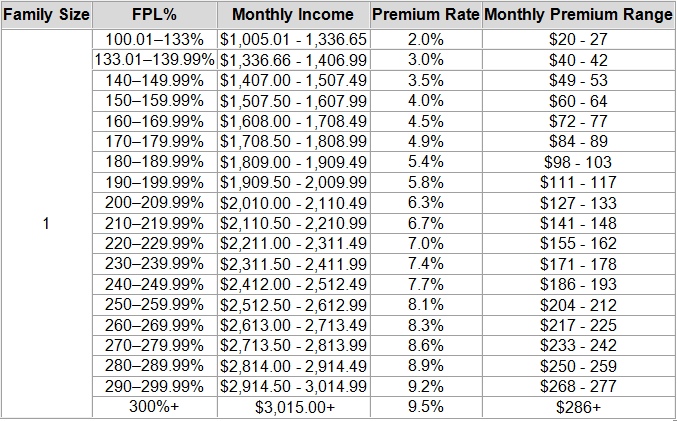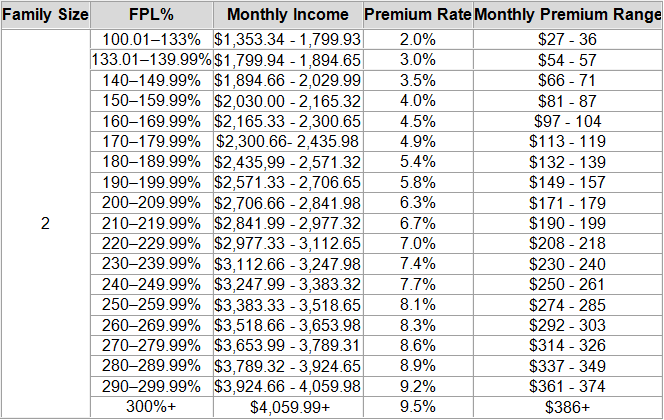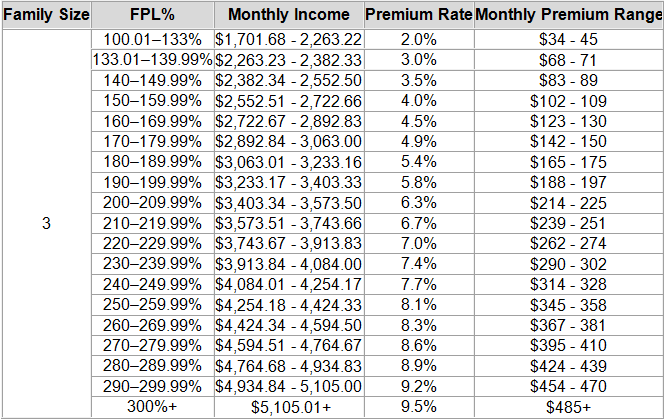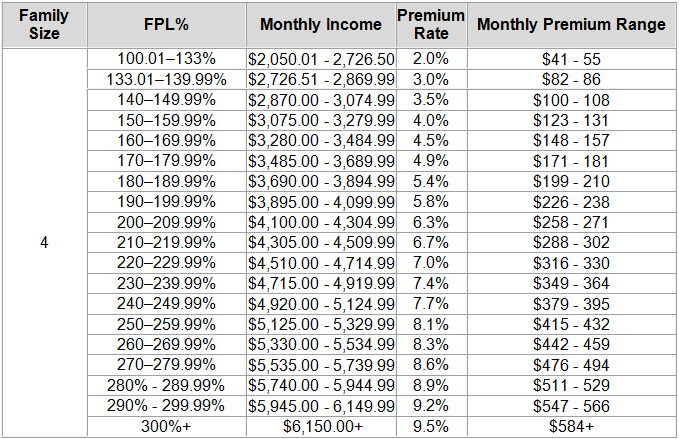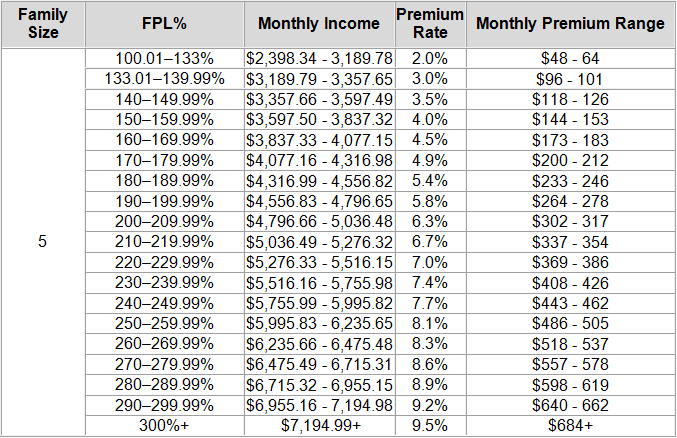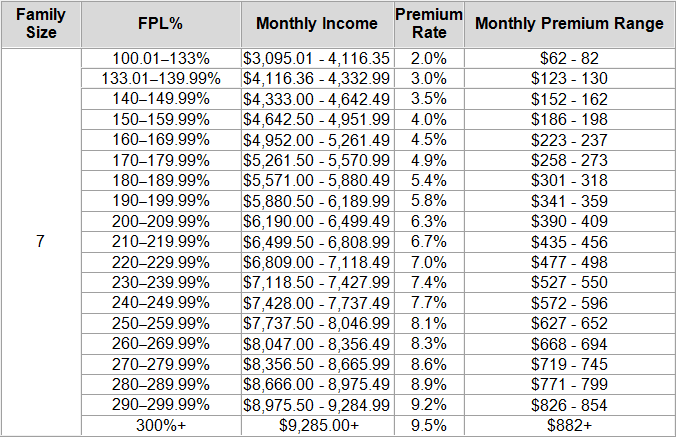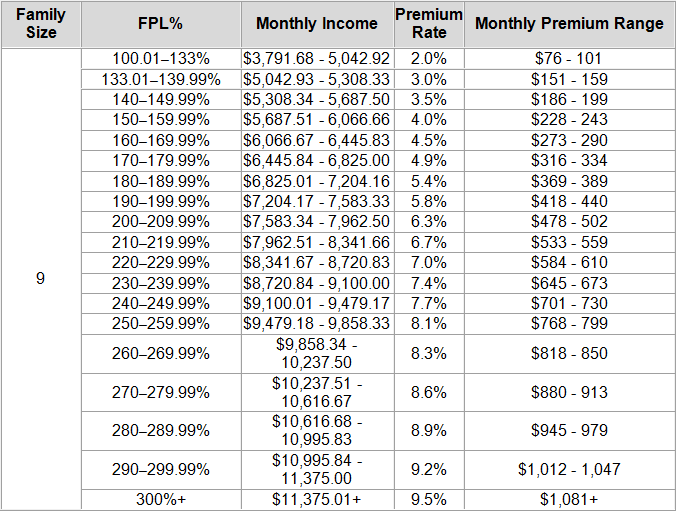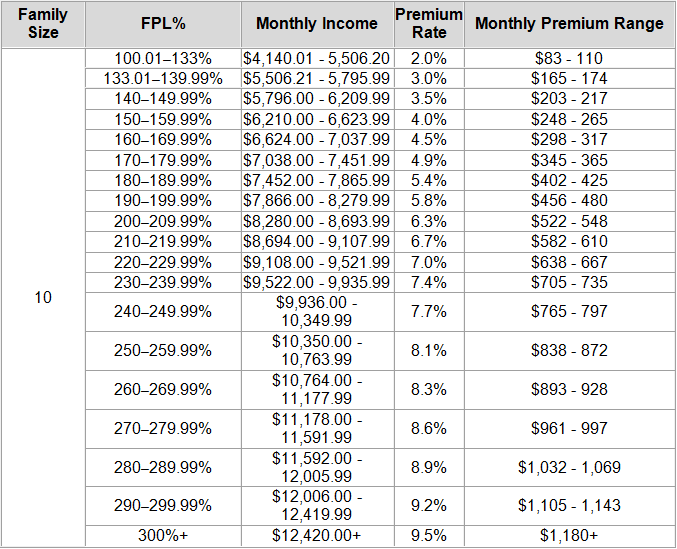48.1 BadgerCare Plus Premium Tables
48.1.1 Premiums for Children
Non-exempt children with an assistance group income above 201 percent of the FPL will be required to pay premiums. Each child’s premium will be based on his or her own assistance group’s size and income. The five percent cap for the cost of total household premiums for children will continue to apply. The cap will be five percent of the income of the premium paying assistance group with the highest countable income amount. The total household’s premiums will be determined based on the combined amount of all children’s premiums or the five percent cap, whichever amount is less. See Section 19.2 Premium Calculations and Section 19.3 Premium Limits for more information on premium caps.
The below table outlines the premium amounts for children.

Note: Children in extensions are not required to pay premiums (see Section 19.1 BadgerCare Plus Premiums). If a parent in the household is in an extension, the children are exempt from paying premiums regardless of their income.
48.1.2 Premiums for Adults
The tables below provide the range of premiums for adults in BadgerCare Plus based on family size and income level. The amounts listed for households with incomes over 200 percent of the FPL apply to families in a BadgerCare Plus extension and to members whose income increases after their renewal approval.
BadgerCare Plus parents, caretakers, and childless adults with income at or below 100 percent of the FPL are not required to pay premiums. Non-exempt parents and caretakers in an extension with income above 133 percent of the FPL are required to pay premiums. Non-exempt parents and caretakers in an extension with income between 100 and 133 percent of the FPL are required to pay premiums starting in the seventh calendar month of their extension.
Click the link below to see the premiums for different assistance groups.
For incomes over 300 percent of the FPL, multiply the net income times .095 and round to the nearest dollar to get the premium amount.
For incomes over 300 percent of the FPL, multiply the net income times .095 and round to the nearest dollar to get the premium amount.
For incomes over 300 percent of the FPL, multiply the net income times .095 and round to the nearest dollar to get the premium amount.
For incomes over 300 percent of the FPL, multiply the net income times .095 and round to the nearest dollar to get the premium amount.
For incomes over 300 percent of the FPL, multiply the net income times .095 and round to the nearest dollar to get the premium amount.
For incomes over 300 percent of the FPL, multiply the net income times .095 and round to the nearest dollar to get the premium amount.
For incomes over 300 percent of the FPL, multiply the net income times .095 and round to the nearest dollar to get the premium amount.
For incomes over 300 percent of the FPL, multiply the net income times .095 and round to the nearest dollar to get the premium amount.
For incomes over 300 percent of the FPL, multiply the net income times .095 and round to the nearest dollar to get the premium amount.
For incomes over 300 percent of the FPL, multiply the net income times .095 and round to the nearest dollar to get the premium amount.
48.1.3 Five Percent Premium Caps for Children
The table below displays the five percent caps of BadgerCare Plus premiums for children in certain households with incomes above 201 percent and below 306 percent of the FPL. Families will pay the combined premiums for the children or an amount equal to five percent of the family’s countable income, whichever is less. For example, a family with five children and an income of 295 percent of the FPL would ordinarily owe premiums amounting to five times $82, which equals $410. However, if the children’s AG size, including the parent, is six, the five percent cap found in the table below is $399. That is the maximum premium amount that the family should be charged for that month.

This page last updated in Release Number: 17-01
Release Date: 04/11/2017
Effective Date: 02/01/2017
